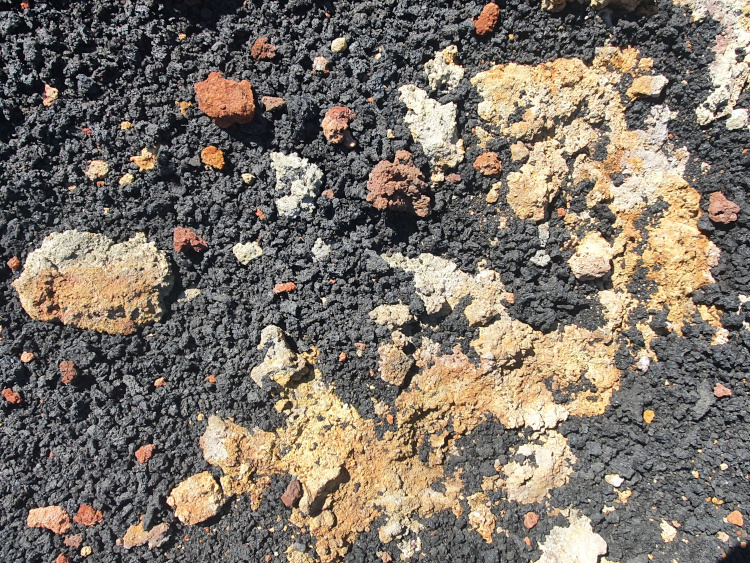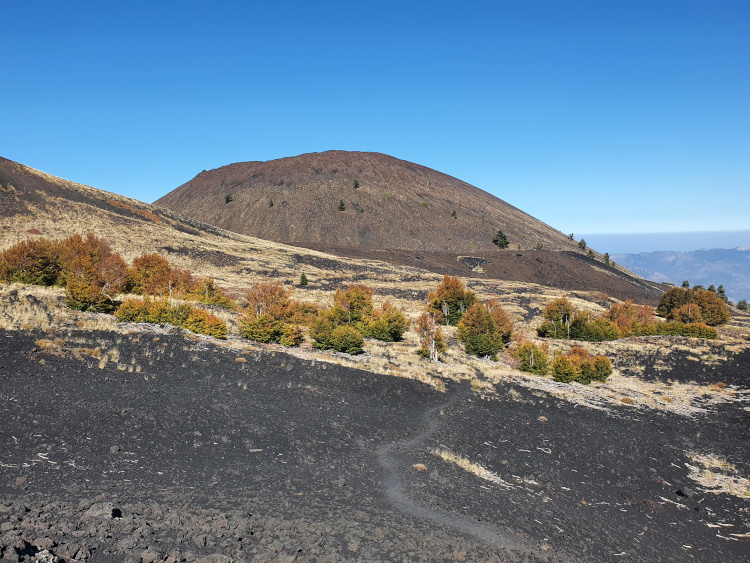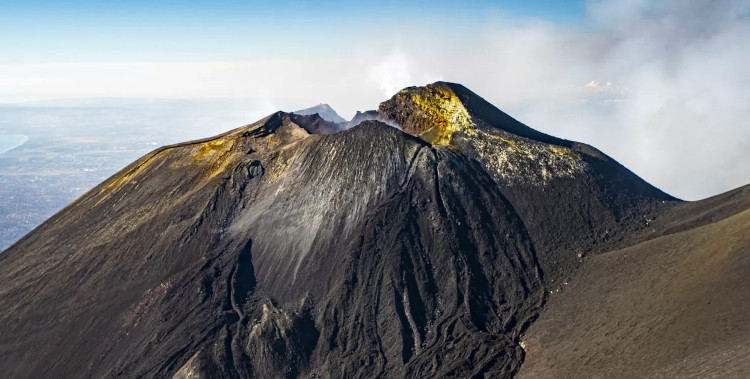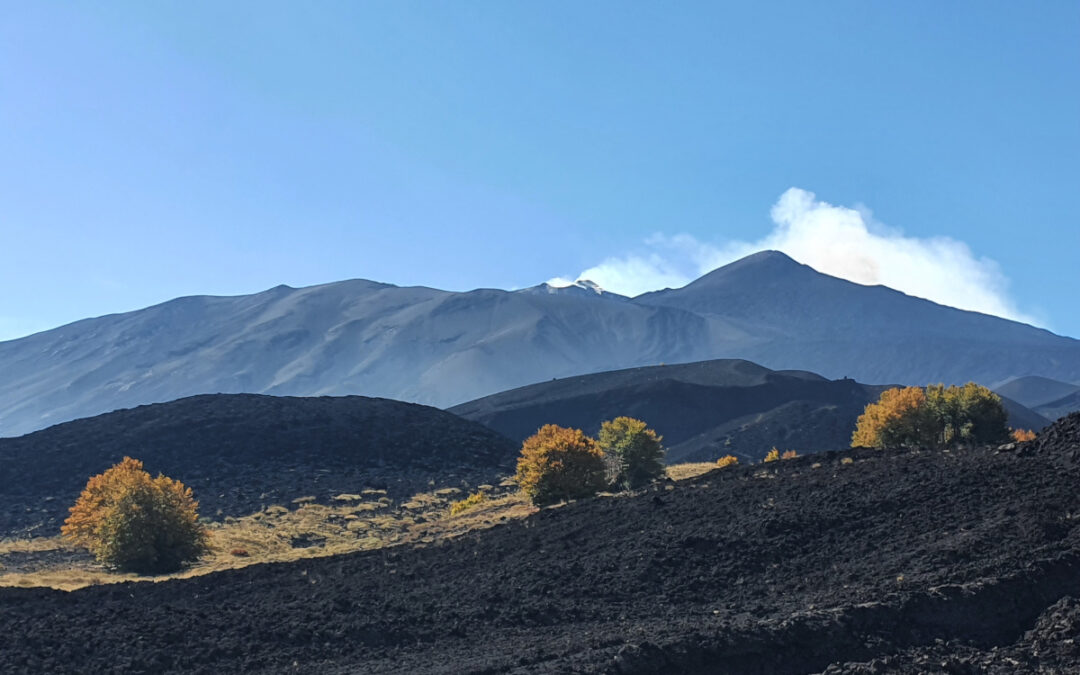Mount Etna is worth a visit at any time of the year and offers a different sight every season. Especially the north side, where the barren, black lunar landscape alternates with forests, bushes and flowers, offers an ever-changing play of colours as the months change:
In winter, the white trunks of the Etna birch (Betula aetnensis) barely stand out against the snow. In spring, the cushions of Astragalus siculus turn green again and dot some slopes with green. In summer, the Etna broom (Genista aetnensis) blooms yellow and gives off a beguiling fragrance.
By the way, the epithet aetnensis means that it is an endemic plant of Etna. Due to the special climate of Etna (large temperature differences between day and night, strong winds, always new ash), there are many endemic plants here that have adapted to these extreme conditions.
Autumn hiking season
While it can be very warm in summer, even on Etna, and we often start our hikes early in the morning or late in the afternoon to avoid the midday heat, autumn often offers ideal hiking weather.
At the end of September and in October it is about 10 to 20 degrees at the starting point of our tours, further up it gets even cooler. In bright sunshine, a short-sleeved T-shirt is perfectly adequate during the ascent. However, you should always take a warm pullover or shirt and a windbreaker with you. When the wind comes from the north, it can be quite chilly. You may also need warmer clothing during our lunch break and on the descent.
We can also lend you windbreakers, trekking poles, backpacks and hiking boots.
Of course, there can also be bad weather in autumn. We therefore always recommend planning the hike as early as possible in your holiday so that you have the option of postponing the tour in case of bad weather.
By the way: If no tour is possible due to bad weather, you will of course get your money back or we can postpone the tour to another day.
The colours of autumn
On our tours on the north side of Etna (North Craters Tour, Etna Trekking Tour or easier tours like the Etna & Alcantara Tour), we cross birch and pine forests before diving into the black volcanic landscape.
In October, the leaves gradually turn yellow and brown. Our panorama consists of black lava flows, yellow clusters of trees spared by the lava flows, and the summit craters in the background.

The green cushions of Astragalus siculus, which are already growing on the older lava flows, are also turning brown. Some of them, however, now glow red because barberry (also an endemic plant, Berberis aetnensis) with red fruits grow in the cushions. Lava sand catches in the cushions, providing a home for other plants. On the slopes of Mount Etna, where new ash is constantly falling and the wind is always blowing the ash away, it is difficult for plants to gain a foothold. Astragalus siculus is therefore a valuable pioneer plant and habitat for many other plants.
From October onwards, at lower altitudes, up to about 1700 metres, you can also see crocuses in flower. Crocus longiflorus grows 10 – 15 cm high and flowers pale purple in autumn. It is only found in Sicily, Malta, the Aegadian Islands and southern Italy.
As in more northern countries, spider threads can be seen floating through the air in autumn.
The colours of lava
But not only the flora of Etna turns colourful in autumn.
Etna itself also offers – all year round – a varied play of colours.
The lava is not simply black or grey, but can take on many other shades, depending on its chemical composition:
- Reddish lava contains a lot of iron.
- The white colour of the lava comes from the calcium and magnesium it contains.
- Sulphur colours the lava yellow.
All the colours of lava at a glance:

Monte Nero on the north side of Mount Etna, formed during an eruption in 1646: its name means black mountain. But it has not been black for a long time. The lava has oxidised and become reddish due to the iron content:

The escaping sulphur gases have turned the Southeast Crater, currently the highest of Etna’s 4 main craters, yellow around its opening in 2022:

